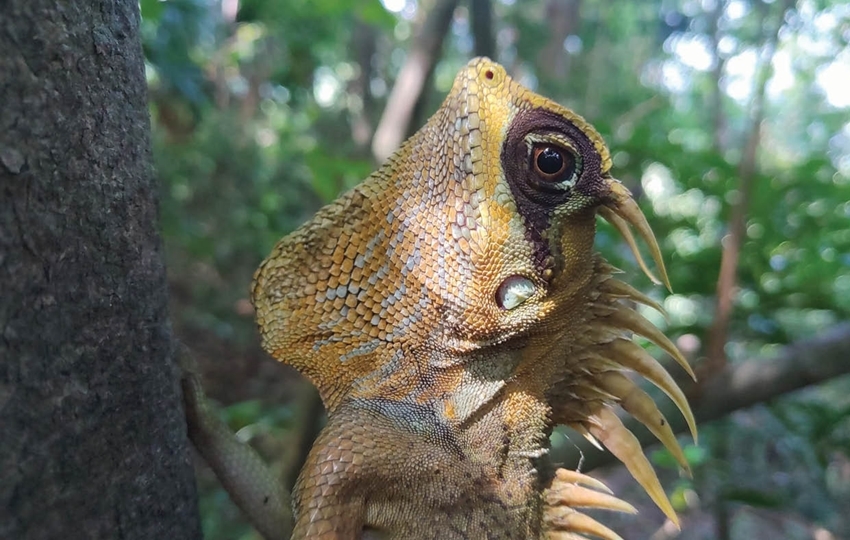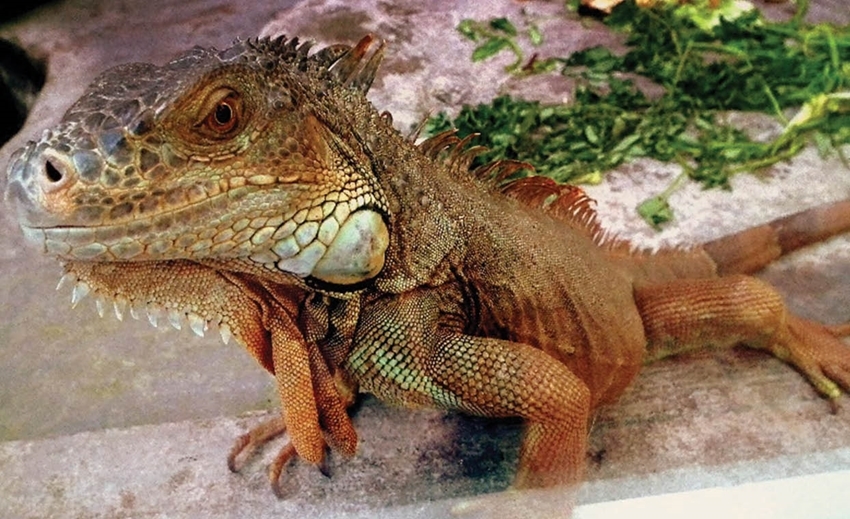 |
| The Beauty of Nataliae Earth Dragons in Phong Dien Nature Reserve |
Despite challenging terrains and harsh weather conditions, such as heavy rains and floods, Mr. Tran Xuan Hai, Deputy Director of the Management Board of Phong Dien Nature Reserve, remains dedicated to the quest for wild animal species. In the pursuit of this search, Mr. Hai is always preoccupied with a small-sized creature, inconspicuous, and less recognized by the wildlife conservation community in the province of interest. This creature is the "earth dragon."
Mr. Hai acknowledges that during the search and conservation efforts for forest animal species, the "earth dragon" was almost forgotten for a considerable period. However, one day, he recalled the significance of this creature, categorizing it as rare, precious, and in need of conservation. This realization prompted him to silently intensify the search and investigation, aiming to prevent the "loss of contact" with the conservation community.
 |
Due to the small shape and size of the "earth dragon" individual, the process of searching and surveying with camera traps is almost ineffective. Since the day wildlife conservation deployed camera traps, the appearance of this small animal has never been recorded. The most feasible search is to observe and record with the naked eye through patrolling and monitoring activities in suitable areas and habitats.
Finding them with the naked eye is not easy because the mountains and forests are vast, while the number of identified "earth dragon" individuals is very rare. This requires conservation workers like Mr. Hai to be even more dedicated, passionate and responsible, always deeply remembering this animal during their journeys and years of searching for wild animals.
 |
| Brown-colored Chinese water dragon |
Mr. Hai said that with a very small number of individuals, small size and many objectively difficult conditions, the search for the "earth dragon" almost inevitably has to rely on the residential community and the people living in the buffer zone. They are people who live and do business next to the forest, so the possibility of seeing this animal is very high. But how to get people to recognize and identify the "earth dragon" and how precious, rare, and endangered they are that need to be preserved is not easy.
Mr. Hai is always concerned and worried about the risk of damage when almost everyone does not know that "earth dragons" are precious and rare wild animals. While hunting and trapping salamanders - a common animal similar in size to the "earth dragon" - is still quite popular among a part of the population, it has "accidentally" caused a disaster that destroys this precious, rare and endangered animals.
In their journey of searching for wild animals, Mr. Hai and his colleagues always carry pictures of the "earth dragon." In villages and communities, he introduces the locals to how to recognize and the necessity of conserving and protecting this rare, precious, and endangered species. Recently, although more people are gaining awareness of the "earth dragon" lately, Mr. Hai still remains focused on awareness-raising activities.
Not only does the "earth dragon" (scientifically known as Acanthosaura nataliae) have an impressive appearance, but it also has the ability to change color rapidly based on environmental conditions. In the first form, the body is brown to gray-brown, with the upper head, neck, and back being light brown or yellow. The upper lip and throat sacs have light brown or milky white color, sometimes interspersed with small black spots. The eye socket extends with a black streak through the tympanic membrane to the shoulder and the tail, with alternating brown or black and white spots. In the second form, the body is moss green, the face on the head, neck and nape are pale yellow-black; orbit and posterior dark streak pale black; The throat and throat sacs are dark blue, the tail has alternating blue-black or brown rings.
Through the search and research process, Mr. Hai has observed that the "earth dragon" typically inhabits well-preserved green forests at altitudes ranging from 1,000 to 2,500 meters above sea level. They are more likely to appear during the rainy season and are rarely encountered in the dry season. Their primary food source includes insects within their distribution area, and they have a remarkable ability to extend their long tongue to catch prey. In Phong Dien Nature Reserve, this species is spotted in the sub-zone 47 and 48 of Phong My commune (Phong Dien).
Being an aesthetics pattern-species, the "earth dragon" is often traded as an ornamental pet in Vietnam and internationally, with scientific value in ecological and behavioral research. As a newly discovered species, scientific data on Acanthosaura nataliae is still incomplete.
However, their natural habitat is threatened by deforestation that jeopardizes their existence. This species is similar to many other reptile species, being endangered due to human activities. This calls for measures to establish protected areas where this species is distributed.
Nature has bestowed Phong Dien with fascinating beauty, featuring diverse and abundant fauna and flora. Among them is the Acanthosaura nataliae, a species discovered in the forests of Thua Thien Hue province in 2006. This reptile is named after the beautiful Russian scientist Natalia, who has made significant contributions to the study of reptiles and amphibians in Vietnam.
Wildlife conservation expert Tong Phuoc Hoang Hieu, affiliated with the Provincial Forest Protection Department, adds that another dragon species called Chinese water dragon has been studied and conserved in the province. This species often resides in midland and mountainous areas, among climbing plants along stream banks. Their lives are closely tied to aquatic environments, moving swiftly on the ground, occasionally climbing trees, and often clinging to branches growing horizontally over the water surface, swimming adeptly.
The fate of the "earth dragon" is ranked at different conservation levels at different times. Before 2012, they were listed in the forest animal category, which at that time included only endangered, rare, and precious forest animal species. Since 2012, the Ministry of Agriculture and Rural Development has stipulated that this species be included in the list of common forest animal species, allowed by the government for breeding and growth for commercial purposes. From 2020, they are listed in the category of other animals allowed for farming. As of February 17, 2023, the "earth dragon" is categorized and managed as endangered, rare, and precious forest animal species, Group IIB, according to Vietnamese law.
Therefore, at present, this species is managed under the conservation regime for endangered, rare, and precious forest animal species, allowed by the state for breeding for commercial purposes, through the establishment of breeding facilities for endangered, rare, and precious forest animals managed by the Provincial Forest Protection Department. Registered breeding facilities must ensure relevant conditions, including "ensuring the legal origin of the breeding stock" and other conditions as stipulated by law.
